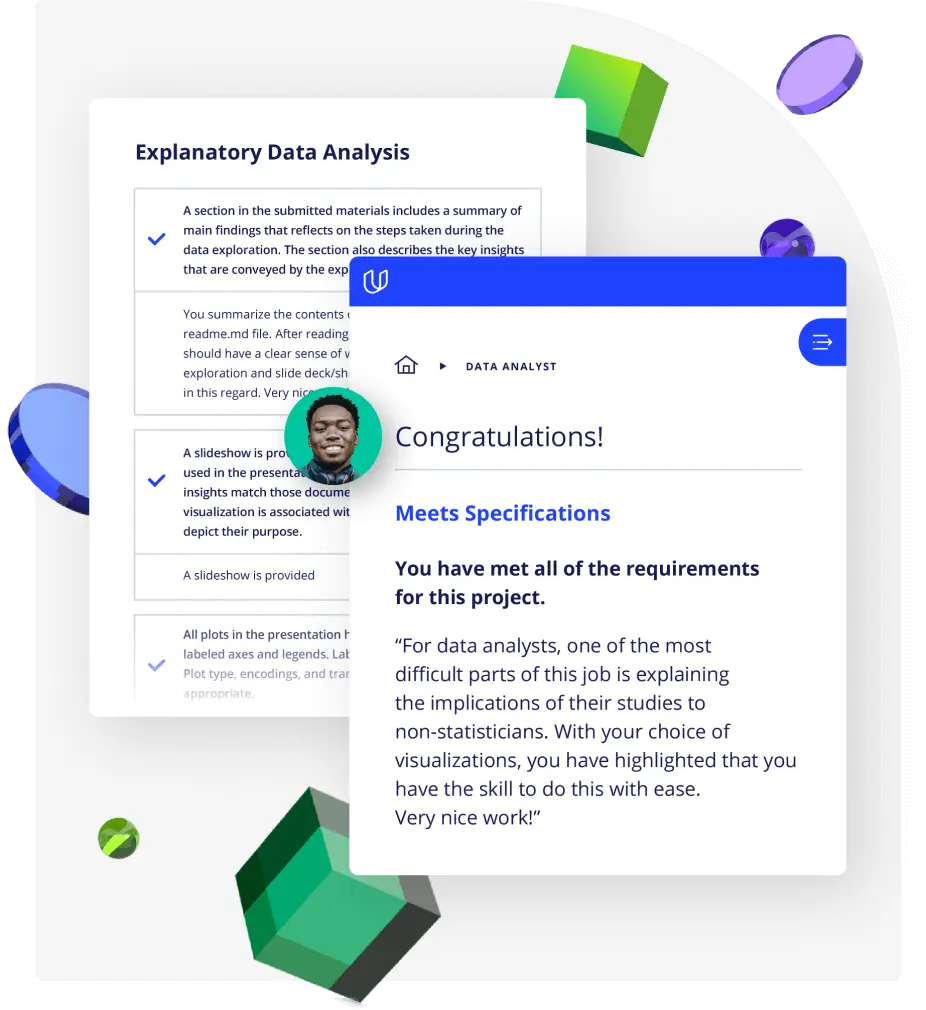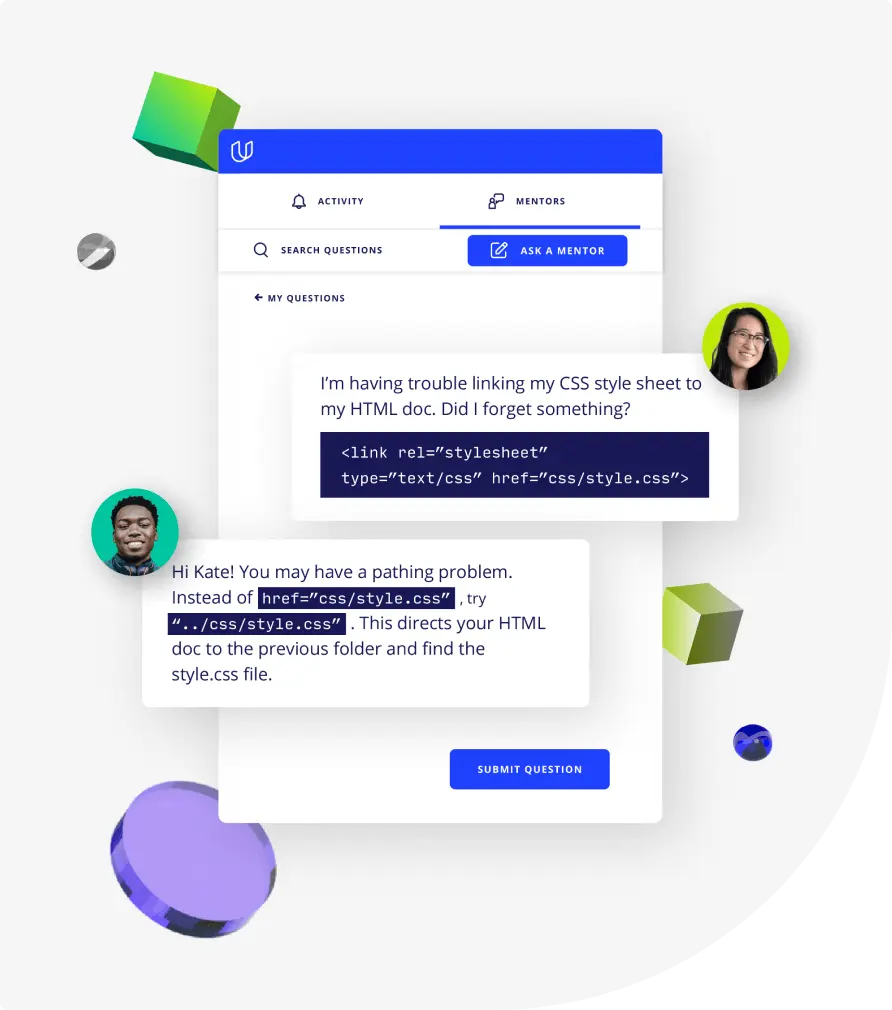Lesson 1
Welcome to the Nanodegree Program!
Welcome! We're so glad you're here. Join us in learning a bit more about what to expect and ways to succeed.

Nanodegree Program
In this program, students will learn to run and manage scalable applications in a cloud native environment, using open source tools and projects like ArgoCD, gRPC, and Grafana.
In this program, students will learn to run and manage scalable applications in a cloud native environment, using open source tools and projects like ArgoCD, gRPC, and Grafana.
Built in collaboration with
SUSE
Intermediate
4 months
Real-world Projects
Completion Certificate
Last Updated June 20, 2024
Skills you'll learn:
Prerequisites:
Course 1 • 45 minutes
Welcome to the Cloud Native Application Architecture Nanodegree Program!
Lesson 1
Welcome! We're so glad you're here. Join us in learning a bit more about what to expect and ways to succeed.
Lesson 2
You are starting a challenging but rewarding journey! Take 5 minutes to read how to get help with projects and content.
Course 2 • 4 weeks
Throughout this course, students will learn how to structure, package, and release an application to a Kubernetes cluster, while using an automated CI/CD pipeline.
Lesson 1
In this lesson, you will learn about the history of cloud native architecture and some tools you will use in the course.
Lesson 2
In this lesson, you will learn about monoliths and microservices, their differences, and their pros and cons.
Lesson 3
In this lesson, you will learn how to use Docker to create an image and how to deploy an application to Kubernetes.
Lesson 4
In this lesson, you will learn Platform as a Service.
Lesson 5
In this lesson, you will learn CI/CD operations and how to use CI/CD tools to deploy an applications
Lesson 6 • Project
With the TechTrends project, the students will apply the knowledge acquired throughout the course.
Course 3 • 4 weeks
In this course, students will learn how to refactor microservice capabilities from a monolithic architecture, and employ different forms of message passing in microservices. To begin, students will create a migration strategy to refactor a service from a monolith to its own microservice and implement the migration. Next, students will be introduced to industry standard best practices for message passing in a service architecture and finally, students will focus on design decisions and the implementations of different forms of message passing in development and production systems.
Lesson 1
Get started with an introduction to monolith and microservices architecture and the role that message passing plays in these designs.
Lesson 2
In this lesson, we will take a strategic approach to refactoring a monolith application into microservices
Lesson 3
Different forms of message passing are applied to solve different types of problems. In this lesson, we'll learn strategies for deciding which technology to use.
Lesson 4
In this lesson, we will learn about how we can implement various message passing techniques in applications
Lesson 5
In this lesson, we'll learn about making our message passing implementations more usable and maintainable in production systems.
Lesson 6 • Project
Course 4 • 4 weeks
This course covers the fundamentals of observability in distributed systems. Today, Kubernetes has become the de facto standard for Cloud Native applications and is widely used for distributed systems. To be effective as an observability expert, it is critical to understand how to monitor and respond to the health and performance of both your Kubernetes clusters and the applications hosted on them. This course will teach students how to collect system performance data using Prometheus, how to collect application tracing data using Jaeger, and how to visualize the results in a dashboard using Grafana.
Lesson 1
In this first lesson, we'll go over the big picture. Why is observability relevant? And what is your role is as an observability engineer? What tools will you need to be able to conduct observability?
Lesson 2
This lesson will get you set up with Prometheus, Jaeger, and Grafana, the main tools you need to start doing observability in your cluster.
Lesson 3
In order to observe performance, we first need to get clear on how we are defining and measuring it. We'll do this using Service-Level Objectives and Service-Level Indicators.
Lesson 4
Tracing will allow us to get performance data on our applications, particularly on the latency of the key processes within them. In this lesson, we'll learn how to conduct tracing using Jaeger.
Lesson 5
We'll look at how we can use Grafana to visualize the data we've been collecting, so that we can see the performance of our system and application at a glance.
Lesson 6 • Project
In this project, you will create dashboards that use multiple graphs to monitor our sample application that is deployed on a Kubernetes cluster.

Data Platform Engineer
Justin Lee designs and builds modern scalable systems and consults for Fortune 500 companies. He currently works in the Silicon Valley as a platform engineer to enable users' data workflows. He has a BS in Computer Science from UCLA and is often mentoring and teaching developers through Codementor.

Engineering Manager, Security Engineering | CISO Staff at Snap Inc.
Nick brings 15 years experience in Security Engineering. He currently leads teams that build highly scalable security services in cloud native environments at Snapchat and previously SpaceX. Nick also advises well established security companies including HackerOne and the fastest growing Open Source Security product company Deepfence.

Ecosystem Advocate for Cloud Native Computing Foundation
Katie's focus is to foster the growth and visibility of the End User Community while bridging the gap with other ecosystem units. In past roles, Katie contributed to the build-out of platforms that gravitate towards cloud-native principles and open-source tooling.

App Modernization Specialist at Google Cloud
Jay has over 15 years experience in technology and open source solutions. Currently Jay helps Google Cloud customers modernize their application platforms using best practices in cloud native technologies.
Average Rating: 4.7 Stars
47 Reviews
Kevin E.
October 20, 2022
The program has been good so far. Being introduced to different open source projects has been a great experience.
Vineeth P.
September 18, 2022
Struggling to make time to complete the course ,but has been a good experience so far
Brian C.
March 19, 2022
Super course, loved the first project
Erol S.
March 16, 2022
I am behind the schedule due to my workload lately but will catch up quickly. This program perfectly fits my needs and expectations.
Theo M.
February 15, 2022
It has already helped me understand the tools I use in my day-to-day work. Thank you so much for giving such great content.
Combine technology training for employees with industry experts, mentors, and projects, for critical thinking that pushes innovation. Our proven upskilling system goes after success—relentlessly.

Demonstrate proficiency with practical projects
Projects are based on real-world scenarios and challenges, allowing you to apply the skills you learn to practical situations, while giving you real hands-on experience.
Gain proven experience
Retain knowledge longer
Apply new skills immediately

Top-tier services to ensure learner success
Reviewers provide timely and constructive feedback on your project submissions, highlighting areas of improvement and offering practical tips to enhance your work.
Get help from subject matter experts
Learn industry best practices
Gain valuable insights and improve your skills

Unlimited access to our top-rated courses
Real-world projects
Personalized project reviews
Program certificates
Proven career outcomes
Full Catalog Access
One subscription opens up this course and our entire catalog of projects and skills.
Average time to complete a Nanodegree program
(449)
4 months
, Intermediate
(4)
3 months
, Advanced
(34)
4 months
, Intermediate
(398)
3 months
, Intermediate
(9)
4 months
, Intermediate
(416)
4 months
, Intermediate
(115)
3 months
, Beginner
(9)
4 months
, Intermediate
(80)
4 months
, Advanced
4 weeks
, Beginner
(87)
4 months
, Advanced
4 weeks
, Beginner
(672)
2 months
, Beginner
(174)
2 months
, Advanced
(62)
3 months
, Intermediate
4 weeks
, Intermediate

Cloud Native Application Architecture
(449)
4 months
, Intermediate
(4)
3 months
, Advanced
(34)
4 months
, Intermediate
(398)
3 months
, Intermediate
(9)
4 months
, Intermediate
(416)
4 months
, Intermediate
(115)
3 months
, Beginner
(9)
4 months
, Intermediate
(80)
4 months
, Advanced
4 weeks
, Beginner
(87)
4 months
, Advanced
4 weeks
, Beginner
(672)
2 months
, Beginner
(174)
2 months
, Advanced
(62)
3 months
, Intermediate
4 weeks
, Intermediate